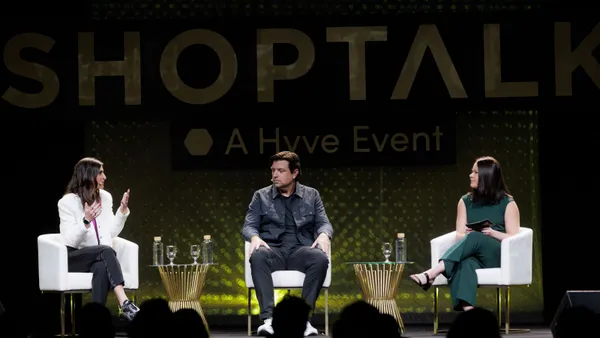COVID-19 has changed consumer behavior for everything from snacking to media viewing to shopping. The consumer's path to purchase from retailers, in particular, has moved from a physical, in-store experience to an omnichannel one — in which consumers increasingly browse and buy products online and often pick up items curbside or in-store.
Broadly, in-person shopping lends itself more toward discovery, whereas online is more for routine trips (when the shopper knows what they're looking for). But even though online behavior is centered more on search and lists, retailers have significant opportunities to drive unplanned purchases and maximize baskets.
Post-checkout, for example, a large percentage of online shoppers make another transaction in the store — with a large opportunity for impulse categories such as candy to be included. (Fifty-five percent to 70% of people who order online and pick up in-store have a second transaction in the store; 30% to 45% who order online and pick up curbside, go into the store for a second transaction.)
Candy is also known to boost online basket sizes: According to Hershey's research, online baskets containing candy products are 41.5% greater than those of in-store purchases that include candy.
Maximizing baskets with smart digital strategies
A three-pronged strategy can help retailers spark more online purchases — and in-store "second basket" buys — that include impulse items such as candy, mints, and gum (CMG).
First, recommending items in the candy category alongside personalized recommendations at online checkout can deliver results: Not only are consumers open to product recommendations based on past purchase behavior (especially when reviewing or confirming their orders), but Hershey also found that candy items had the highest click-through rates and cart adds at up to two or three times more than other food categories.
"Inserting the candy category and our brands at that moment of decision delights the consumer, especially when accompanied by a personalized recommendation, and drives a really high conversion to purchase," said Ed Edson, senior director of omnichannel marketing at Hershey.
Second, building seasonal anticipation by promoting seasonal products helps maximize baskets.
"When consumers see that Reese's egg, there's this anticipation that they know Easter is coming —even if it’s a couple of months away," Edson said. "With all our holidays, we work with retailers to influence seasonal impulse purchases early, mid, late and throughout the season both in-store and online."
Third, retailers can embrace more opportunities to capitalize on the many everyday moments that often involve confections — such as TV or movie watching, gifting, S'mores cookouts, baking, celebrations, or rewarding children (for things such as good grades or completed chores).
These everyday moments account for about 30% of everyday confection purchases, and they generate a larger CMG spend per trip (+$0.38) and a higher overall basket size for retailers (+$9.38). Retailers can emphasize these occasions online through the use of shippable "solution hubs", which make it easier for the shopper to find and convert on the items they need for these everyday moments.
"Especially during COVID right now, we know that the shopper has been looking for different ways to be inspired — whether that be through recipes or activities or ways just to make ordinary moments more special," said Lauren Foltz, senior manager of holistic shopper insights at Hershey.
"We have been partnering with our retailers to create solution hubs to help improve the online shopper experience, and ultimately increase basket size for the retailer," Foltz said. "Our everyday-moment and seasonal hubs help to inspire and create browsability for the shopper — and make it easier to find what they are looking for or weren't planning to buy."
Measuring impulse for impact
The benefits of these hubs, and other strategies, are measurable. Hershey, for one, partners with retailers to understand how well its advertising and merchandising solutions serve both the retailer and the shopper.
"Analytics help point retailers in the right direction of where they need to invest more and spend more time to get the experience right for the shopper," Foltz said.
Ultimately, Hershey is deeply invested in understanding consumer shifts in behavior to maximize demand for its products and results for its retail partners at large.
"We don't just think about candy," Edson said. "We take a total-store approach by assessing the total path to purchase versus in-store behavior versus online. Integrating both the total-store data and the path to purchase, in which we have proprietary insight, is how we add unique value to the retail experience."










